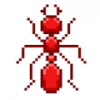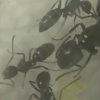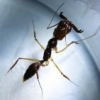Hello, I was a bit curious as to what ant species you guys find to be the most interesting and judging from the diverse list of local some of you guys are from, this should be very interesting. If possible, try to include roughly 3-4 species that are your favorite to keep / observe in the wild and to make it a bit more interesting, feel free to describe their "personalities" (I often don't engage in personifying animals and other organisms as I feel that it degrades their value, but since this is in jest, It might be fun.), anecdotes and various reasons for why that particular species of ant is your favorite / one of your favorites.
In order to get the ball rolling, I will name a few of mine :
Monomorium emarginatum : Though this ant is relatively unassuming, I have found it to be a joy to observe both in the wild and in captivity. Although this species of ant is rather small, In my area it completely monopolizes / benefits transitional habitats surrounding forests by dispersing seeds, breaking down dead arthropods, protecting various host plants, aerating and adding nutrients to soil and out competing other invasive ants. This ant is incredibly hardy and lives within one of the most inhospitable environments one can find ants in new England, where it relies upon the elements to kill their insect prey for them. Without going into to much detail, while writing my research paper on them as well as their biology and behavior, I found their societies to be incredibly intricate and complex, utilizing incredibly fast and efficient means of recruitment, queen adoption and the construction of a wide variety of structures (made entirely of ants) in order to survive (These a just a few examples of interesting adaptations this species possesses.). For the last 31 years, little to no research has been written regarding their behavior and role in the ecosystem to such an extent that in all of this time, know one had ever seen a male. I could write 50 pages for why I love this species so much, but until my research paper is released, it will have to wait. I also find their "personalty" to be rather amusing. They work with utmost efficiency and cooperation and do so with purpose. That and their glossy appearance, small stature and high temper when disturbed make this ant appear as if it takes itself far to seriously. I think we all know a few people who are like this. In conclusion, this tiny little ant at first appeared to be nothing out of the ordinary, but under closer observation, opened up a world of unique behaviors, drama and organization on a completely unprecedented level. This species in short, will always be one of my favorites.
Solenopsis Molesta : This is another minuscule species of ant with intricate and unusual behaviors and a similar personality (although it has less of a temper and is more of a "recluse"). I always take pleasure in trying to find that one S. molesta worker sneaking through a colony of Crematogaster, Tetramorium or Formica (It reminds a bit of "where's Waldo"). Their timid nature, rather "adorable" appearance and interesting and unique social behavior make this species a wonderful find. It's tendency to engage in lestobiotic relationships with other ants makes them an unusual and fascinating ant to study.
Pheidole pilifera : Need I say more? Their dimorphic caste system and unique nest structure (nests in my area are often funnel shaped) make this species quite interesting in my opinion. where I live, their is nothing else like them. I have sadly never been able to get a hold of a queen due to their elusive nature
Temnothorax curvispinosis : a rather colorful and unique little ant that lives within hollow stems and nuts, It's colonies are small and timid and can be found scattered all over the forest floor. I will never forget the first time I cracked open an acorn and found a whole entire civilization within it. There was something almost magical about the experiences that reminded me just how diverse and beautiful life truly is. Although this tiny ant seems quite delicate, it braves harsh winters, fights off slave makers and giant empires hundreds of times the size of their own colonies and lives on the most meager of resources. it is in many ways, the ultimate survivor. In the words of Jeff Goldblum from Jurassic Park "Nature finds a way".
Other Ant Species I Especially Enjoy Keeping : Tetramorium sp. E, Lasius Neoniger, Aphenogaster sp., Pheidole dentata (not native), Messor barbarus (not native).






















